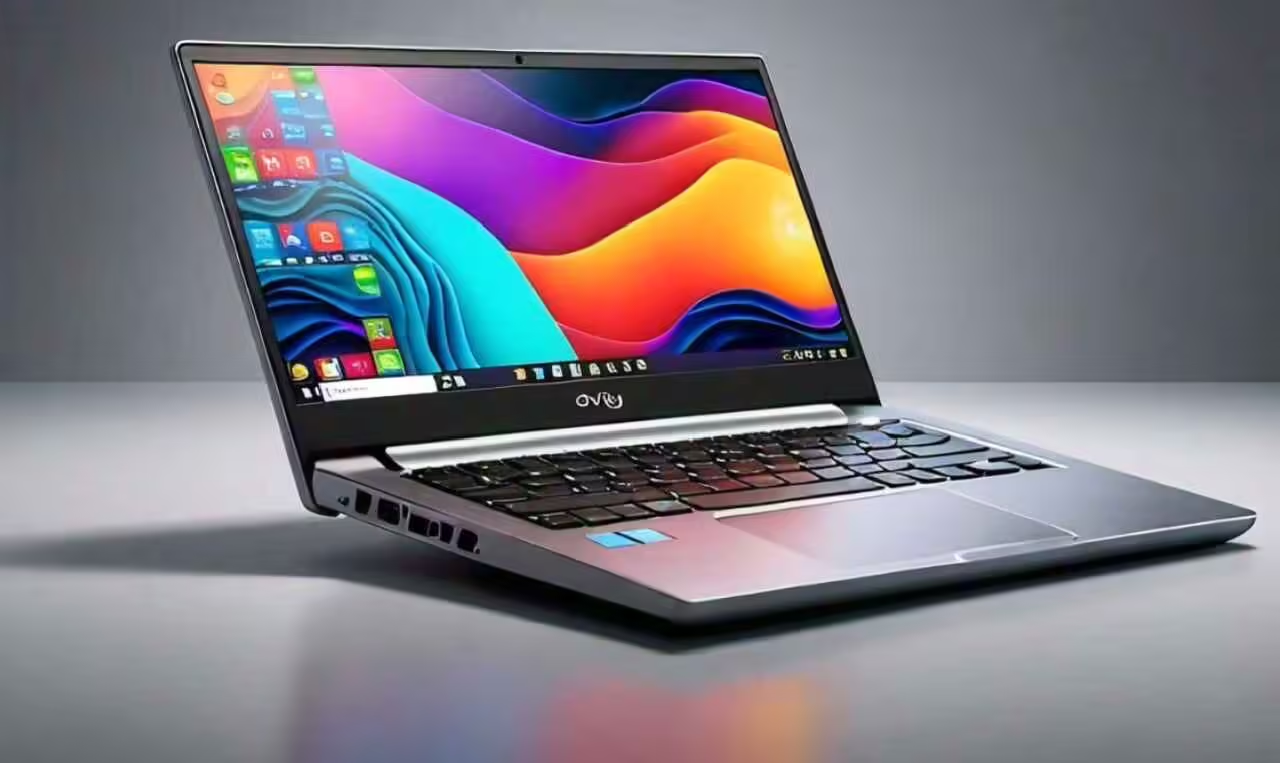top free personal finance software: unlock your financial potential

Top Free Personal Finance Software
Managing personal finances can be a daunting task, especially in today’s fast-paced world where budgeting, tracking expenses, and planning for the future are crucial. The good news is that there are several free personal finance software options available that make financial management easier and more efficient. In this comprehensive guide, we’ll walk you through the top free personal finance software available today, highlighting their features, benefits, and what makes each one unique.
Whether you’re looking to create a budget, track your spending, or get help with managing your investments, there’s a free tool that can meet your needs. By the end of this post, you’ll have a better understanding of the best options out there, and which one is right for you.
Why You Need Personal Finance Software
Managing your finances manually can be overwhelming and prone to errors. From handling bills to tracking expenses, you need an organized approach to ensure that you’re financially healthy. Personal finance software makes this easier by automating many of these tasks and giving you insights into your spending habits. Here are a few key reasons why personal finance software is essential:
- Budgeting Made Simple: Automatically track and categorize expenses, so you know where your money is going.
- Financial Insights: Get a detailed view of your income, expenses, debts, and savings in one place.
- Saving Time: Automating your financial management process saves you hours of manual calculations.
- Investment Management: Keep an eye on your investment portfolio, even if you are a novice.
- Goal Setting: Set and track financial goals, such as saving for a home or paying off debt.
With these benefits in mind, let’s dive into the top free personal finance software options available today.
Top Free Personal Finance Software Options
Here’s a breakdown of the best free personal finance software you can start using today to take control of your financial health.
1. Mint
Mint is one of the most popular and widely used free personal finance software options available today. Owned by Intuit, the same company behind QuickBooks and TurboTax, Mint offers users an all-in-one platform to manage their finances with ease.
Key Features
- Expense Tracking: Mint automatically categorizes your transactions, making it easier to track where your money goes.
- Budgeting Tools: Create and customize budgets with alerts for overspending.
- Bill Tracking: Get reminders to pay bills on time, helping you avoid late fees.
- Credit Monitoring: Keep an eye on your credit score with free updates.
- Investment Tracking: Track your investment portfolio and check its performance.
Pros
- User-friendly interface with clear, detailed charts.
- Mobile app available for both iOS and Android.
- Free access to a variety of features, including credit score monitoring.
Cons
- Advertisements may clutter the user interface.
- Lacks advanced investment tracking features for serious investors.
2. Personal Capital
If you’re looking for a tool that combines budgeting with investment tracking, Personal Capital is a great option. While Personal Capital is free, it’s particularly beneficial for users who want to track their investment portfolio alongside their daily spending.
Key Features
- Expense Tracking: Monitor your income, expenses, and net worth in one place.
- Investment Tracking: Manage your portfolio and compare its performance with market benchmarks.
- Retirement Planner: Get detailed retirement planning tools and check if you’re on track to meet your retirement goals.
- Cash Flow Analysis: A complete view of your cash flow with categorized transactions.
Pros
- Excellent for users with investment portfolios.
- Robust retirement planning and forecasting tools.
- Comprehensive view of all financial accounts in one dashboard.
Cons
- Heavy focus on investments, which might not appeal to someone looking purely for budgeting help.
- Users may receive upsell offers for paid financial advisory services.
3. YNAB (You Need A Budget)
YNAB (You Need A Budget) is a personal finance software designed with budgeting at its core. It follows a zero-based budgeting approach, ensuring that every dollar has a purpose. Although YNAB offers a paid version, you can use it free for 34 days, and students get a full year free.
Key Features
- Zero-Based Budgeting: Every dollar you earn is allocated to a specific job, such as savings, debt repayment, or expenses.
- Debt Reduction Tools: Focus on paying off your debt with customized debt reduction plans.
- Goal Setting: Set financial goals and track your progress over time.
- Syncing Across Devices: YNAB syncs across all devices, allowing you to access your budget on-the-go.
Pros
- Encourages proactive budgeting and money management.
- Detailed financial insights with personalized reports.
- Excellent support resources, including workshops and educational tools.
Cons
- No free version after the 34-day trial (except for students).
- Steeper learning curve compared to other budgeting tools.
4. Goodbudget
Goodbudget is a simple, envelope-based budgeting tool that works well for individuals and couples. It helps users allocate money into virtual envelopes for specific categories, such as groceries, rent, or entertainment. While the app is free, it does have some limitations unless you upgrade to the paid version.
Key Features
- Envelope Budgeting: Use virtual envelopes to allocate your budget for different expenses.
- Debt Tracking: Track your debt and set up a plan to pay it off.
- Syncing: Sync your budget across multiple devices, making it ideal for couples.
- Expense Tracking: Monitor your spending and stay within your budget.
Pros
- User-friendly and intuitive interface.
- Great for beginners looking for a simple budgeting solution.
- Works well for couples managing a joint budget.
Cons
- Limited features in the free version (only 10 envelopes).
- Doesn’t offer investment tracking.
5. GnuCash
GnuCash is an open-source personal finance software that is free to use. It offers a more complex approach to finance management, with features like double-entry accounting, making it ideal for users who are familiar with accounting principles.
Key Features
- Double-Entry Accounting: Keep your books balanced with professional accounting features.
- Expense Tracking: Categorize your income and expenses for easy tracking.
- Investment Tracking: Track stocks, mutual funds, and other investments.
- Reports: Generate detailed financial reports for budgeting and analysis.
Pros
- Powerful features for those who understand accounting.
- Completely free and open-source.
- Available for Windows, macOS, and Linux.
Cons
- Steeper learning curve, especially for beginners.
- Outdated user interface that can be difficult to navigate.
6. PocketGuard
PocketGuard is designed for individuals who want a quick and easy way to know how much disposable income they have after covering essential expenses. It’s a great budgeting tool that helps you stay on track with spending and savings.
Key Features
- Spending Tracker: Track your spending in real-time and categorize transactions.
- In My Pocket Feature: Quickly see how much money you have left after bills, goals, and necessities.
- Bill Negotiation: Use PocketGuard’s service to negotiate lower bills.
- Savings Goals: Set up savings goals and track progress.
Pros
- Simplified budget view, perfect for users who want a quick snapshot of their finances.
- Bill negotiation feature can help you save money.
- Free version offers a wide range of features.
Cons
- Lacks more advanced budgeting and investment tracking options.
- Some features are locked behind a premium subscription.
7. EveryDollar
EveryDollar is a simple budgeting tool based on Dave Ramsey’s financial philosophy. It’s designed for users who want to build and stick to a zero-based budget. The basic version is free, but users can upgrade to the premium version for more advanced features like account syncing.
Key Features
- Zero-Based Budgeting: Similar to YNAB, it allocates every dollar to a specific job.
- Customizable Categories: Create custom budget categories based on your unique financial situation.
- Expense Tracking: Manually enter and categorize transactions.
Pros
- Simple, user-friendly interface.
- Great for those who follow the Dave Ramsey philosophy.
- Free version offers sufficient features for basic budgeting.
Cons
- Manual input required for expense tracking in the free version.
- Lacks investment tracking features.
Choosing the Right Personal Finance Software for You
Now that you’re familiar with the top free personal finance software options, the next step is choosing the one that best fits your needs. Here are a few things to consider when making your choice:
1. Your Financial Goals
- Budgeting: If your primary goal is creating and sticking to a budget, Mint, YNAB, and Goodbudget are excellent choices.
- Investment Tracking: For those with an investment portfolio, Personal Capital or GnuCash might be better suited to your needs.
- Debt Reduction: If paying off debt is your priority, look for software that offers debt tracking and reduction tools, such as YNAB or Goodbudget.
2. Ease of Use
- If you’re new to personal finance management, opt for software with a user-friendly interface, like Mint or EveryDollar.
- More experienced users might appreciate the detailed features of GnuCash or Personal Capital.
3. Mobile Access
- If you need to manage your finances on the go, make sure the software you choose has a mobile app. Mint, YNAB, and PocketGuard offer great mobile versions.
4. Free vs. Paid Features
- While all of the software mentioned here has free versions, some have premium features that may be worth considering. If you need additionalfeatures such as automatic account syncing, detailed investment tracking, or advanced reporting tools, you might want to evaluate whether the paid versions are worth the upgrade. However, for most users, the free versions provide more than enough functionality for basic financial management.
Key Considerations When Choosing Free Personal Finance Software
When deciding on the best top free personal finance software, keep in mind the following factors that will help ensure the tool aligns with your specific financial needs:
1. Budgeting Needs
- If your main focus is budgeting, you’ll want software that makes it easy to categorize expenses, track income, and help you create a realistic budget. Look for a tool with detailed categorization options, alerts for overspending, and the ability to set goals. Mint and YNAB excel in these areas.
2. Account Integrations
- Many finance tools allow you to link bank accounts, credit cards, loans, and investment accounts directly. This feature is a huge time-saver because it automates transaction tracking. Software like Personal Capital, Mint, and PocketGuard allow you to sync your accounts, so you don’t have to manually enter each transaction.
3. Investment Management
- If you are serious about managing your investment portfolio, then software that provides detailed investment tracking and performance analysis is critical. Personal Capital offers a robust set of investment tracking tools, helping you to monitor your asset allocation, compare against market benchmarks, and plan for retirement.
4. Security
- Since most personal finance software requires linking sensitive financial accounts, security is a top priority. Make sure the software you choose uses strong encryption protocols and offers additional security features, such as two-factor authentication. All of the tools listed above, including Mint, Personal Capital, and PocketGuard, provide high-level security for your data.
5. User Support and Community
- Some personal finance tools offer strong user communities, tutorials, and customer support to help you get the most out of the software. YNAB is particularly known for its educational resources, offering free online classes and webinars. Mint and Personal Capital also offer FAQs and user guides, though YNAB’s community-driven approach may appeal more to those seeking a hands-on learning experience.
6. Mobile and Web Access
- If managing your finances while on the move is important to you, then mobile-friendly software is key. Most of the tools covered in this article, such as Mint and PocketGuard, offer mobile apps. Be sure to check app reviews to make sure that the mobile version is as functional as the desktop version. PocketGuard, for example, shines in its ability to provide a quick snapshot of your available spending money through its mobile app.
7. Customizability
- Your financial situation may not fit into a pre-designed set of categories, so having the ability to customize categories or goals is important. YNAB, for instance, allows users to create custom budget categories, while Goodbudget lets you set up your envelope system tailored to your spending habits.
Comparison of Top Free Personal Finance Software
To help make your decision easier, here’s a comparison of the top free personal finance software options, highlighting their standout features:
Software Best For Key Features Drawbacks Mint Expense tracking, Budgeting Automatic categorization, Budget alerts, Free credit score monitoring Ads in the free version Personal Capital Investment Tracking Investment management, Retirement planning, Cash flow analysis Heavy focus on investments YNAB Zero-based budgeting Debt reduction, Goal setting, Syncing across devices Limited free trial, learning curve Goodbudget Envelope-based budgeting Simple envelope system, Debt tracking, Syncing for couples Limited envelopes in free version GnuCash Advanced users Double-entry accounting, Detailed reporting, Investment tracking Complex for beginners PocketGuard Simplified budgeting “In My Pocket” disposable income feature, Bill negotiation Limited advanced features EveryDollar Beginners, Zero-based budgeting Simple budgeting, Customizable categories Manual input in free version Tips for Maximizing the Use of Free Personal Finance Software
Now that you have a clearer understanding of the best options, here are a few tips to help you get the most out of your free personal finance software:
1. Set Up All Accounts
- Make sure to link all your financial accounts (bank, credit cards, loans, investments) to get a complete view of your finances. This will allow the software to track all your transactions, categorize them, and give you insights into your spending habits.
2. Create a Realistic Budget
- The key to using any personal finance tool effectively is to create a realistic budget. Be honest with yourself about your income and expenses. Use the software’s tools to track your spending against your budget and adjust as needed.
3. Take Advantage of Alerts and Notifications
- Most personal finance software offers the ability to set alerts for things like bill payments, low balances, or overspending. Set up these alerts to ensure you’re always on top of your finances and avoiding any unnecessary fees or penalties.
4. Use Reports to Gain Insights
- Many of these tools offer reporting features that can provide insights into your spending patterns and financial progress over time. Review these reports regularly to make sure you’re staying on track with your goals, whether it’s saving more, paying off debt, or increasing your investments.
5. Explore Educational Resources
- Some tools, like YNAB, offer a wealth of educational resources, including tutorials, webinars, and community forums. Take advantage of these to deepen your understanding of personal finance and get the most out of your software.
6. Regularly Update Your Goals
- Your financial situation and goals are likely to change over time. Make sure to regularly revisit and adjust your budgets, savings goals, and debt reduction plans as your circumstances evolve.
Final Thoughts on the Top Free Personal Finance Software
Whether you’re just starting on your financial journey or you’re looking for a more advanced tool to track your investments, there’s a free personal finance software out there to suit your needs. Each software on this list comes with its unique set of features, making it important to select the one that aligns with your financial goals.
If budgeting is your primary concern, Mint or YNAB may be your best bet. For those looking for a more comprehensive tool with robust investment tracking, Personal Capital is an excellent choice. And for individuals looking for simple, envelope-based budgeting, Goodbudget offers a user-friendly option.
Choosing the right personal finance software is a crucial step toward achieving financial stability and success. By leveraging the features and benefits of these top free tools, you can take control of your finances and make informed decisions that lead to long-term financial well-being.
Start today with one of these tools and begin the journey to a healthier financial future!
By keeping track of your expenses, setting clear goals, and using the software to monitor your progress, you’ll find that managing your finances is not only easier but more effective. The right tool will empower you to make smarter financial decisions and help you achieve your financial dreams.
Frequently Asked Questions (FAQs)
1. Is free personal finance software secure?
Yes, most free personal finance software options, such as Mint and Personal Capital, offer bank-level encryption to keep your financial information safe. Additionally, many offer two-factor authentication for added security.
2. Can free personal finance software help me get out of debt?
Absolutely. Many of these tools, like YNAB and Goodbudget, focus on budgeting and debt reduction. By giving you a clear view of your income and expenses, they can help you identify areas where you can cut back and allocate more money toward debt repayment.
3. Is free personal finance software enough for managing investments?
For basic investment tracking, free software like Personal Capital offers robust tools to help manage your portfolio. However, more advanced investors may need additional tools for more detailed analysis, which may require a paid version or a separate service.
4. Can I use free personal finance software on multiple devices?
Yes, most free personal finance software options offer syncing across multiple devices. Mint, YNAB, and Goodbudget, for example, allow you to manage your finances from both desktop and mobile platforms, making it easy to stay on top of your finances from anywhere.
5. Is upgrading to a paid version worth it?
For many users, the free version of personal finance software will suffice. However, if you need advanced features like account syncing (EveryDollar) or more detailed investment tracking (Personal Capital), it may be worth considering an upgrade.
Read Previous Article: Pollaste: A Comprehensive Guide to the Versatile Culinary Delight





